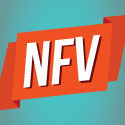OPNFV Still Basic, 'Not Sexy' Yet
First software release from the Open Platform for NFV Project addresses foundational issues such as the initial build and creating automated test scripts.
March 11, 2015

Anyone expecting the OPNFV's first software release to be loaded with "sexy stuff" is going to be disappointed, admits Heather Kirksey, executive director of the (relatively) new open source effort. Instead the release due out next month will be foundational, and serve to put in place the critical building blocks for the organization's future. (See OPNFV Set to Unveil First Code Release and Kirksey Steps In to Lead OPNFV.)
Setting aside for the moment how anyone defines the sex appeal of a virtualization process, a closer look at that release shows the Open Platform for NFV Project Inc. organization is looking at its initial build, at creating automated build scripts for future integration and at getting a continual integration process built and running, Kirksey tells Light Reading.
"We are working on getting the foundational infrastructure in place so we can start pulling all these components together, building them and testing them," she says.
As part of the industry's efforts to help network operators successfully introduce virtual network functions (VNFs) into their networks, OPNFV set out to define an NFV infrastructure and a virtual infrastructure manager and is still clearly focused on those tasks. (See OPNFV Does Telecom/Open Source 'Mind Meld'.)
Just getting started on that process means setting up bare metal servers -- the group has two pods of connected servers running in the Linux Foundation labs, Kirksey says -- to start performing tests that will allow the basic OPNFV platform to be established.
The challenge is to get a lot of different components, including OpenStack and OpenDaylight (two other open source projects in the cloud/virtualization space) running and configured together in the right way and getting automation tools built out and scripted, she explains.
"We will basically have scripts that will be able to bring in a particular version of OpenStack, a particular version of OpenDaylight, a particular version of KVM, a version of CentOS Linux, a particular version of open vSwitch, and get them all up and running, get them configured, and do some testing in, we hope, an automated and repeatable fashion," Kirksey says.
Read more about NFV strategies and the role of open source on our NFV channel here on Light Reading.
Once the basic OPNFV platform is in place, there is a community test lab project in place, known as Pharos, which uses labs that have been offered up for members to test their specific NFV deployments on top of that platform.
In his blog, Chris Price, who chairs the OPNFV's Technical Steering Committee, which is announcing the new release, said the first release comes after two spirited and intense meetings during the past few weeks. Kirksey admits there was some disagreement among members over the type of build tools to use and other issues. But, she says, there was also a sense of urgency from members who were interested in seeing the group move forward, even if the initial results weren't perfect.
OPNFV expects to release updates to its software every six months.
— Carol Wilson, Editor-at-Large, Light Reading
You May Also Like










